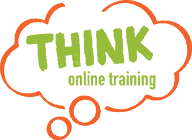Functional Skills English Level 2 Guide
Functional Skills English Level 2 course covers 5 main topics:
- Speaking, Listening and Communicating
- Reading
- Writing
- Spelling, punctuation and grammar
- Writing composition
Your Functional Skills English Level 1 course will you speak, listen, communicate, read and write clearly, accurately, confidently and with effectiveness. By the end of the course you should be able to:
- Listen, understand and make relevant contributions to discussions with others in a range of contexts
- Apply your understanding of language to adapt delivery and content to suit audience and purpose
- Read a range of different text types confidently and fluently. Apply your knowledge and understanding of texts to your own writing
- Write texts of varying complexity, with accuracy, effectiveness, and correct spelling, punctuation and grammar; and
- Understand the situations when, and audiences for which, planning, drafting and using formal language are important, and when they are less important.
Level 2 English – Speaking, Listening and Communicating
1. Identify relevant information from extended explanations or presentations
2. Follow narratives and lines of argument
3. Respond effectively to detailed or extended questions and feedback
4. Make requests and ask detailed and pertinent questions to obtain specific information in a range of contexts
5. Communicate information, ideas and opinions clearly and effectively, providing further detail and development if required
6. Express opinions and arguments and support them with relevant and persuasive evidence
7. Use language that is effective, accurate and appropriate to context and situation
8. Make relevant and constructive contributions to move discussion forward
9. Adapt contributions to discussions to suit audience, purpose and medium
10. Interject and redirect discussion using appropriate language and register
Level 2 English – Reading
11. Identify the different situations when the main points are sufficient and when it is important to have specific details
12. Compare information, ideas and opinions in different texts, including how they are conveyed
13. Identify implicit and inferred meaning in texts
14. Understand the relationship between textual features and devices, and how they can be used to shape meaning for different audiences and purposes
15. Use a range of reference materials and appropriate resources (e.g. glossaries, legends/keys) for different purposes, including to find the meanings of words in straightforward and complex sources
16. Understand organisational features and use them to locate relevant information in a range of straightforward and complex sources
17. Analyse texts, of different levels of complexity, recognising their use of vocabulary and identifying levels of formality and bias
18. Follow an argument, identifying different points of view and distinguishing fact from opinion
19. Identify different styles of writing and writer’s voice
Level 2 English – Writing – Spelling, punctuation and grammar
21. Use correct grammar (e.g. subject-verb agreement, consistent use of a range of tenses, definite and indefinite articles) and modality devices (e.g. to express probability or desirability)
22. Spell words used in work, study and daily life, including a range of specialist words
Level 2 English – Writing – Writing Composition
23. Communicate information, ideas and opinions clearly, coherently and effectively
24. Write text of an appropriate level of detail and of appropriate length (including where this is specified) to meet the needs of purpose and audience
25. Organise writing for different purposes using appropriate format and structure (e.g. standard templates, paragraphs, bullet points, tables)
26. Convey clear meaning and establish cohesion using organisational markers effectively
27. Use different language and register (e.g. persuasive techniques, supporting evidence, specialist words), suited to audience and purpose
28. Construct complex sentences consistently and accurately, using paragraphs where appropriate
